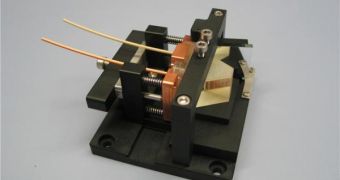A team of German scientists has recently announced the development of a new, blood-analysis instrument, which is able to detect pathogens without the use of markers. The technology is very compact, and can be used in hospital settings, as well as in mobile transfusion units and blood-donation clinics. Results from the device are available within a few minutes, its developers say, and their level of accuracy is very high, according to AlphaGalileo.
There are numerous situations in which the new device will make the difference between life or death. In Egypt, for example, healthcare experts routinely conduct blood-donation runs in towns and villages, where people are asked to give blood inside the lab bus. But the problem with this approach is that more than 25 percent of the harvested material is contaminated with pathogens that can trigger the development of conditions such as AIDS, syphilis and others. A fast, mobile analysis unit would help doctors screen out those with infections at a moment's notice, and only collect healthy blood.
“Our consortium has developed a glass chip which has antibodies on it. Tiny surface oscillations are induced in the chip. If the relevant virus binds with an antibody, the oscillation changes,” Dr. Thomas Velten, who is a head of department at the Fraunhofer Institute for Biomedical Engineering IBMT, in Sankt Ingbert, explains. The Egyptian company VACSERA, Mivitec GmbH, the Institute for Analytical Sciences ISAS, in Dortmund, and the University of Lausitz were also involved in the research, which was conducted under a European Union (EU) sponsorship.
The new instrument is far less susceptible to influences coming from variations in temperature, like other mobile analysis units are, and also possesses up to four test squares. This means that the harvested blood samples can be tested for four different pathogens at the same time. The device is also encapsulated, which minimizes the risk of the blood becoming contaminated with pathogens from the lab workers' hands. In the new setting, blood can only flow through a predefined course inside the analysis unit. According to its creators, the new system could become available for mass production within three years.

 14 DAY TRIAL //
14 DAY TRIAL //